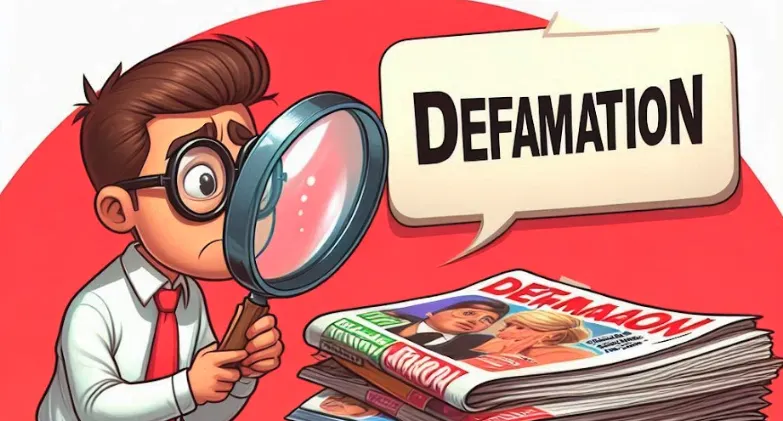The Rights Of a Person With Disabilities Act, 2016
advertisement
In India, the laws for helping people with disabilities have changed a lot over the years. The Rights of Persons with Disabilities Act, 2016, is a key law that works to make sure people with disabilities are treated fairly and have the same opportunities as others. India also agreed to follow the United Nations rules on the rights of disabled people. These rules require everyone—governments, organizations, and individuals to protect the rights of people with disabilities.
What is Disability?
A disability is when something doesn’t work right in a person’s body or mind, or when someone has trouble learning or getting along with others. This can make it harder for them to grow and develop like others. Disability is a condition that can make it hard for someone to move, see, hear, think, or do everyday tasks. Disabilities can be present from birth or can develop because of illness, injury, or other reasons.
In the world of medicine, disabilities are usually classified based on the type of issue they cause and how severe it is. The medical approach views disability as a problem within the individual's body or mind. Its main goal is to use medical interventions and therapies to manage or resolve the disability.
Today, we understand disability in a broader way than just the medical model. The social model of disability says that disability is not just about individual health problems. It also involves the barriers and discrimination people face in society that make it hard for them to fully participate and be included. This model sees disability as something that happens because of these social and environmental barriers.
To address this, the focus is on removing obstacles, promoting inclusivity, and helping people with disabilities be active in all parts of life. In India, the Rights of Persons with Disabilities Act, 2016, reflects this new understanding by focusing on the rights of people with disabilities and working to include them more fully in society.
advertisement
Section 2(s) of the Rights of Persons with Disabilities Act, 2016, defines a ‘Person with disability’ as “a person with long-term physical, mental, intellectual or sensory impairment which, in interaction with barriers, hinders his full and effective participation in society equally with others.” In other words, a person with a disability is someone who has a long-term physical, mental, or sensory condition that makes it harder for them to take part in everyday activities and fully participate in society like others do.
What are the Rights of Persons with Disabilities under the RPWD Act, 2016?
In 2016, a new law called the Rights of Persons with Disabilities (RPWD) Act was introduced. It replaced an older law from way back in 1995. The whole point of this new law is to follow the rules set by the United Nations about people with disabilities. The big idea is to give people with disabilities a helping hand and make sure they have the same opportunities as everyone else.
The UN rules (Declaration on the Rights of Disabled Persons) include ideas to support and empower people with disabilities, such as:
advertisement
- Respect for inherent dignity, individual autonomy including the freedom to make one’s own choices, and independence of persons;
- Non-discrimination;
- Full and effective participation and inclusion in society;
- Respect for difference and acceptance of persons with disabilities as part of human diversity and humanity;
- Equality of opportunity;
- Accessibility;
- Equality between men and women;
- Respect for the evolving capacities of children with disabilities and respect for the right of children with disabilities to preserve their identities.
In the 1995 law about disabilities, there were 7 types of disabilities listed, like
- Blindness;
- Low Vision;
- Leprosy Cured;
- Hearing Impairment;
- Locomotor Disability;
- Mental Retardation;
- Mental Illness;
advertisement
In 2016, this law was replaced by the Rights of Persons with Disabilities (RPWD) Act. The new law added more types of disabilities, making a total of 21. These new types include disabilities like dwarfism, effects from acid attacks, speech problems, and conditions like autism and cerebral palsy.
The main goal of this new law is to make sure people with disabilities live with respect and dignity. It also helps protect them from being treated unfairly and ensures they can fully take part in society, including politics and the economy.
Salient features of Rights of Persons with Disabilities Act, 2016
Rights Of Disabled Persons Under the Act:
Chapter II of the Act talks about the rights of people with disabilities. It gives them the following rights:
- The Central and state election officials must make sure that polling booths are accessible for people with disabilities.
- Section 3 of the Act, says that people with disabilities have the right to be treated equally by the law and get the same legal protections as everyone else. If their rights are violated, they can seek the same legal remedies as anyone else. The Act also bans discrimination against people with disabilities in areas like jobs, education, public places, and services. It makes sure they cannot be denied any rights or benefits that others have.
- Section 5 of the Act, says that people with disabilities have the right to live in their community. They are not forced to live in any specific place and can access all kinds of support services, whether they are at home, in a residential facility, or in the community.
advertisement
- Section 6 of the Act, protects people with disabilities from cruelty, inhumane treatment, torture, or any kind of degrading treatment.
- People with disabilities have equal rights and cannot be forced to have medical procedures that make them infertile.
- Section 7 of the RPWD Act, ensures that people with disabilities are protected from abuse, violence, and exploitation. It says that the government must take steps to safeguard them. According to Section 7(2) of the RPWD Act, anyone who thinks that abuse, violence, or exploitation has happened, is happening, or might happen to a person with a disability should report it to the local Executive Magistrate.
- Section 10 of the RPWD Act, says that people with disabilities cannot be forced to undergo any medical procedure that makes them infertile without their consent.
- Section 38 of the Act says that if a person with a serious disability feels they need extra support, they can apply for it to the designated authority. Someone else or an organization can also apply for them. The application is then sent to the Assessment Board, which reviews it and sends a report to the relevant authority. Based on this report and the government programs, the person will receive the extra support they need.
- The Act states that if an employee becomes disabled while working, they cannot be fired. Instead, they may be moved to a different job that suits their abilities, but their salary cannot be lowered.
advertisement
Education:
Chapter III of the RPWD Act explains the educational rights of people with disabilities. It guarantees free and compulsory education for children with disabilities aged 6 to 18. The Act says that children should be able to choose between regular or special schools. Section 17 of the Act ensures that children with a significant disability (at least 40% of a specific disability) receive free learning materials until they turn 18.
This law shows that the Indian government wants to help people with disabilities get a fair chance in education. These sections focus on creating a better learning environment for students with disabilities..
Here’s what Sections 30 and Section 31 say;
The government should set up a plan to help children with disabilities go to school. This plan should include:
- Providing transport or money to help families get their children to school.
- Making sure schools and training centers are accessible for everyone.
- Giving books, uniforms, and other supplies to students with disabilities.
- Offering scholarships to students with disabilities.
- Changing exams so they are easier for blind students and those with low vision.
- Adjusting the school curriculum to better support students with disabilities.
- Allowing students with hearing impairments to take fewer language classes.
advertisement
Additionally, Section 32 states that every higher education institution must reserve at least 5% of seats for students with significant disabilities.
Section 16 outlines the responsibility of schools to provide education to disabled children. It says that the government and local authorities must ensure that all schools they fund or recognize offer inclusive education to children with disabilities:
- Admit disabled children without discrimination and give them the same opportunities for education, sports, and recreation as other students.
- Make sure school buildings and facilities are accessible.
- Provide any special adjustments needed for each student.
- Offer the support necessary for both academic and social growth, aiming for full inclusion.
- Ensure that education for blind or deaf students is provided in the best language and communication methods for them.
- Identify specific learning disabilities early and take appropriate steps to address them.
- Keep track of each disabled student’s participation, progress, and completion of education.
- Provide transportation for disabled students and their helpers if they need extra support.
advertisement
Skill Development and Employment:
The Act supports equal job opportunities for people with disabilities. Section 21 ensures that all workplaces follow equal opportunity policies.Section 34 requires both government and private employers to reserve at least 4% of job openings for people with significant disabilities.Section 20 bans discrimination in hiring, promotions, and job conditions, stating that no government job can discriminate against a person with a disability.
To help people with disabilities start their own businesses, the law says the government should create a plan. This plan should offer land at lower prices for business use to people with disabilities under Section 43.
The law also makes sure that:
- People with disabilities cannot be denied promotions at work.
- Employees who become disabled cannot be fired or demoted.
- Additionally, to improve job opportunities for people with disabilities in rural areas, the law requires that 3% of the budget for poverty reduction be set aside for them. This has helped some disabled people in rural areas, but the benefit has been limited.
advertisement
Social Security and Health:
Section 24 of the RPWD Act requires the government to create programs that offer social security for people with disabilities. This includes healthcare, rehabilitation, and assistive devices to support their well-being and quality of life. Section 25 says that both private and government hospitals must provide free healthcare and make sure that all areas are accessible to people with disabilities. Also the government and local authorities must make sure that:
- Free healthcare is available, especially in rural areas, based on family income.
- All government and private hospitals and clinics are accessible to people with disabilities.
- People with disabilities get priority in receiving care and treatment.
- Study and research to understand what causes disabilities.
- Promote ways to prevent disabilities.
- Check all children at least once a year to find those who might be at risk.
- Train staff at primary health centers.
- Run awareness campaigns and share information on hygiene, health, and sanitation.
- Provide care for mothers and babies before, during, and after birth.
- Educate the public through schools, health centers, and community workers.
- Use TV, radio, and other media to raise awareness about disabilities and prevention.
- Ensure healthcare is available during natural disasters and emergencies.
- Provide essential medical care for life-saving treatments.
- Offer sexual and reproductive health care, especially for women with disabilities.
advertisement
Section 27 adds that the government and local authorities must, according to their resources, organize rehabilitation services and programs, focusing on health, education, and employment for people with disabilities.
Inheritance:
Section 13(1) of the Rights of Persons with Disabilities Act, 2016:
The government must make sure that people with disabilities have the same rights as everyone else to:
- Own or inherit property.
- Manage their money and financial affairs.
- Access bank loans, mortgages, and other types of financial credit.
advertisement
Understanding the Advisory Board and District-Level Committee:
Chapter XI of the Act sets up advisory boards at the Central and State levels, as well as district-level committees. These boards and committees help the government by giving advice on programs and policies for people with disabilities. They also review and coordinate the work of different departments that deal with disability issues.
CENTRAL ADVISORY BOARD:
Section 60 of the Act describes who is on the Central Advisory Board:
- The Minister in charge of the Department of Disabled Persons is the Chairperson.
- The Minister of State in charge of the same department is the Vice Chairperson.
- The board also includes three Members of Parliament: two elected by the Lok Sabha (the lower house) and one by the Rajya Sabha (the upper house).
- Members of the Central Advisory Board are appointed for three years.
- The Central Government can remove a member before their term ends.
- Members can also resign by giving notice to the Central Government.
- If a position becomes vacant, a new person will be nominated to fill the rest of the term.
- Under Section 62 of the Act, People who are bankrupt, mentally unsound, or have been convicted of a crime cannot be members of the advisory board.
advertisement
STATE ADVISORY BOARD:
The State Advisory Board is made up under Section 66 of the Act:
- Five members who are experts in disability and rehabilitation.
- Five members are appointed to represent different districts in the state.
- Ten members from NGOs and groups that work with people with disabilities, ideally including some people with disabilities themselves.
- Three members from the state chamber of trade and commerce.
- Members of the State Advisory Board are appointed for three years.
- The Central Government can remove members before their term ends.
- People who have been convicted of a crime, are mentally unsound, or are bankrupt and haven't paid their debts cannot be members.
- Section 67: Members can be removed by the state government before their term ends, but only after being given a chance to explain why they should stay. Members can also resign by informing the state government. If a position becomes vacant, a new person will be nominated to fill the rest of the term.
advertisement
DISTRICT LEVEL COMMITTEE:
Section 72 of the Act, sets up district-level committees to handle local complaints from people with disabilities. The state governments decide the rules for how these committees are formed and how they work.
Offenses and Penalties:
- Section 89: If someone breaks the rules of the RPWD Act:
- For the first offense, they can be fined up to 10,000 rupees.
- For the second offense, the fine is at least 50,000 rupees but can go up to 5,00,000 rupees.
- Section 91: If someone cheats to get benefits meant for people with disabilities, they can face: Up to two years in prison, or A fine up to 1,00,000 rupees, or Both prison and fine.
- Section 92: For abusing or exploiting people with disabilities, including physical, sexual, or emotional abuse: Offenders can be imprisoned for six months to five years, and Fined.
- Section 93: If someone fails to provide required information, they can be fined up to 25,000 rupees.
- Section 94: For offenses committed by government employees under this Act: A court can’t take action unless the government gives permission or a complaint is filed by an authorized officer.
advertisement
In Summary.
The Rights of Persons With Disabilities Act was created to protect the dignity of people with disabilities and prevent discrimination. It aims to help people with disabilities fully participate and be included in society. The law also encourages respect and aims to give people with disabilities equal rights. The Act focuses on ensuring that people with disabilities are treated fairly and justly. It seeks to prevent mistreatment, which can cause serious emotional and psychological harm.
The goal is to provide both social and economic justice. The Rights Of Persons With Disabilities Act and the constitution guarantee rights to disabled people, including special provisions for education and jobs to ensure economic fairness. However, just having the law isn’t enough; authorities and the legal system need to actively monitor and enforce it.
Frequently Asked Questions (FAQs):
1. What is the main purpose of The Rights Of Persons With Disabilities Act?
The Rights of Persons with Disabilities Act aims to protect the dignity of people with disabilities, prevent discrimination, and ensure their full participation and inclusion in society. It promotes respect for their rights and provides special provisions for education and employment.
2. How does The Rights of Persons with Disabilities Act support people with disabilities in education?
The Rights of Persons with Disabilities Act requires the government to create accessible educational environments, provide financial support for transportation, adapt the curriculum for various disabilities, and offer scholarships. It ensures that schools and institutions are equipped to meet the needs of students with disabilities.
advertisement
3. What are the penalties for not following The Rights of Persons with Disabilities Act ?
Violations of The Rights of Persons with Disabilities Act can result in fines and imprisonment. For example, breaking the Act’s provisions can lead to fines up to 5,00,000 rupees for repeated offenses, and fraudulent claims to benefits can result in up to two years in prison or a fine up to 1,00,000 rupees.
4. Who is responsible for enforcing The Rights of Persons with Disabilities Act ?
The enforcement of the RPWD Act is the responsibility of various authorities including the Central and State Advisory Boards, district-level committees, and other relevant government agencies. They ensure that the Act's provisions are implemented and followed.
5. What rights does The Rights of Persons with Disabilities Act guarantee to people with disabilities?
The Rights Of Persons With Disabilities Act guarantees several rights, including the right to access education, employment, and public services, protection from discrimination, and access to healthcare and social benefits. It also ensures that people with disabilities can own and manage property and financial affairs equally with others.
advertisement
References:
- Department of Empowerment of Persons with Disabilities
- THE RIGHTS OF PERSONS WITH DISABILITIES ACT, 2016
- Declaration on the Rights of Disabled Persons
- Section 2(s) of the Rights of Persons with Disabilities Act, 2016
- THE PERSONS WITH DISABILITIES \ (EQUAL OPPORTUNITIES, PROTECTION OF RIGHTS AND FULL PARTICIPATION ) ACT, 1995
- Section 3 of the Rights of Persons with Disabilities Act, 2016
- Section 5 of the Rights of Persons with Disabilities Act, 2016
- Section 6 of the Rights of Persons with Disabilities Act, 2016
- Section 7 of the Rights of Persons with Disabilities Act, 2016
- Section 7(2) of the Rights of Persons with Disabilities Act, 2016
- Section 38 of the Rights of Persons with Disabilities Act, 2016
- Section 10 of the Rights of Persons with Disabilities Act, 2016
- Section 16 of the Rights of Persons with Disabilities Act, 2016
advertisement
- Section 17 of the Rights of Persons with Disabilities Act, 2016
- Section 32 of the Rights of Persons with Disabilities Act, 2016
- Section 21 of the Rights of Persons with Disabilities Act, 2016
- Section 34 of the Rights of Persons with Disabilities Act, 2016
- Section 24 of the Rights of Persons with Disabilities Act, 2016
- Section 25 of the Rights of Persons with Disabilities Act, 2016
- Section 27 of the Rights of Persons with Disabilities Act, 2016
- Section 20 of the Rights of Persons with Disabilities Act, 2016
- Section 43 of the Rights of Persons with Disabilities Act, 2016
- Section 13(1) of the Rights of Persons with Disabilities Act, 2016
advertisement
- Chapter XI of the Rights of Persons with Disabilities Act, 2016
- Section 60 of the Rights of Persons with Disabilities Act, 2016
- Section 89 of the Rights of Persons with Disabilities Act, 2016
- Section 90 of the Rights of Persons with Disabilities Act, 2016
- Section 91 of the Rights of Persons with Disabilities Act, 2016
- Section 92 of the Rights of Persons with Disabilities Act, 2016
- Section 93 of the Rights of Persons with Disabilities Act, 2016
- Section 72 of the Rights of Persons with Disabilities Act, 2016
advertisement

Written by Ruthvik Nayaka
Ruthvik Nayaka is a final year law student, his interests lie in areas including, but not limited to, Corporate Law and taxation law. He is also the EN-ROADS Climate Ambassador. He facilitates climate-workshops, climate action simulation games and group meetings.
advertisement
Further Reading
advertisement






